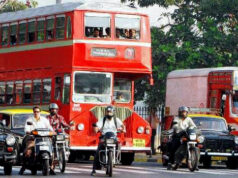We have had a long track record of bad experiences when it comes to the government’s ability to deliver basic services to citizen. While it is important for governments to ensure ‘Equity’, which means it cannot shirk its responsibility of delivering services to citizens without discrimination; it is equally important for government to improve ‘Efficiency’, so that services reach every individual. We live in an era of big talk by ministers, yet no respite to common man. While several checks and measures were imposed on the administration, these have not worked, largely because the inefficiency in the government institutions is topped by the heavy hand of bureaucracy. Public Private Partnerships came up as one of the ways to increase efficiency in government functioning with respect to service delivery. Under the PPP model, the government is still largely responsible for delivery of services but uses the efficiency of private sector to do so.
India has unique and interesting experience of working on PPP model even before it became the buzz word in the last decade or so. One of the oldest examples of PPP in our country is private aided schools, where the school is managed privately but assisted by the government in more ways than just financial support. Most of India’s major infrastructure development projects today are being executed through private companies. National highways, airports, ports, metro rails, flyovers and Special Economic Zones are some successful examples where the government has been able to provide world class facilities through the PPP model.
Another successful example of PPP is in the health sector—the Rashtriya Swasthya Bima Yojna, a national health insurance scheme for people below poverty line. Under the scheme, the government pays for health insurance of poor to private health insurance companies. This has enabled poor people to go to a hospital of their choice, whether government or private, and get medical care costing up to INR 30,000. The model is so successful that countries like Germany have shown interest in replicating it. The revolution in our telecommunication sector can also be attributed to PPP—where government sells spectrum and private companies run the show. Today almost every service of government that has started reaching out to people has some component of PPP or the other; whether it is passports, the Unique Identity Aadhaar card, water, electricity, or grievance redressal regarding these services through E-Governance. In all the above cases the government has continued the role of ‘provisioning’ the services but has outsourced the role of ‘provider’. Now there is need to move further up on the ladder. A huge amount of government work includes day-to-day administrative work and they can benefit by tapping into the efficiency of private sector, by contracting out non-core functions.
According to the PPP database as on 31 July 2011, 758 projects were underway in India costing INR 833 billion, which is around 10% of our GDP. Of the total projects, 53% are in roads, comprising 78% of the total cost. Tourism, education and health care are the other potential sectors which attract almost negligible PPP investment. During the 11th Five Year Plan (2007-12), total spending on infrastructure was INR 20.5 trillion wherein private investment was only around 36%, costing INR 7.4 trillion. Under the 12th Five Year Plan (2012-17), the government has planned to get 50% spending of total planned expenditure on infrastructure from the private sector, which is estimated to be INR 20.5 trillion.
Despite the fact that there is a good stock of successful examples, there are valid challenges with the functioning of the PPP model. These can be addressed as follows:
First, there has to be an open and transparent mechanism to build the partnerships so that it doesn’t become a practice to outsource work to favoured companies which will lead to politicisation, incorporating cronyism. Second, capacity building of officials must be done, to write foolproof contracts that don’t provide scope for manipulation. Third, enforcement of contracts by officials on companies must be done without any fear or favour. Fourth, it is necessary to build institutional mechanism of checks and balances by aligning incentives. This can also be done by outsourcing the work to two different companies: one for building and another one for maintaining. In this way, the greed of one businessman would work as best protection from greed of another businessman. In this regard, Jean Tirole’s work is very relevant for which he has recently been awarded with the Nobel Prize in economics for 2014.
The PPP model is crucial for building infrastructure for fast economic growth which is required in today’s competitive and globalised world. Many can argue against the increased expenditure by government on PPP projects, but it remains that this is a very small yet productive expenditure on capital investment. It would be almost impossible for a government to build 100 smart cities in five years without engaging the private sector. PPP has opened up government projects to incorporate a professional approach to work, with clear quality benchmark and timelines, as compared to the secretive attitude of bureaucrats and the usual bhagwan bharose timeline. This would bring better services to citizen and make institutions accountable. By doing so the government can live up to its election winning mantra of ‘Minimum Government, and Maximum Governance!’.
Post Disclaimer
The opinions expressed in this essay are those of the authors. They do not purport to reflect the opinions or views of CCS.





